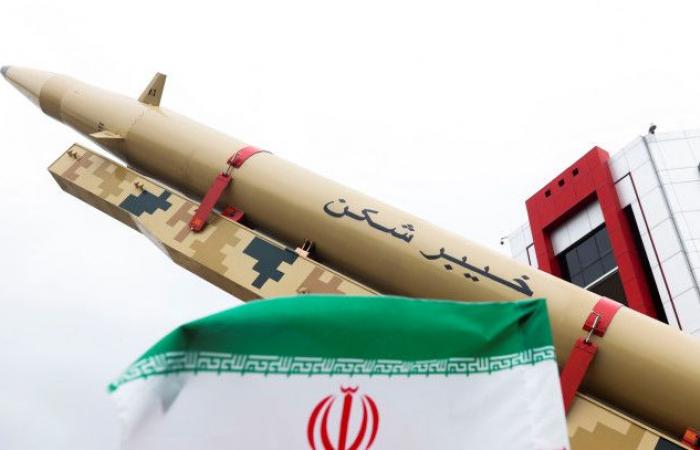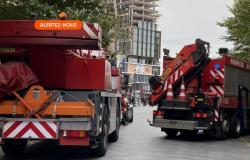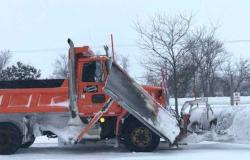International Atomic Energy Agency Director-General Rafael Grossi on Wednesday contradicted Prime Minister Benjamin Netanyahu’s claim that Israel hit a nuclear site in Iran while carrying out 20 airstrikes on October 26.
One of the sites attacked was connected to Iran’s nuclear program, Netanyahu said. Leaks indicated that he was referring to the site at Parchin, where Iran had a nuclear site in the early 2000s but which it eventually moved and covered up.
Grossi said Parchin has had no nuclear activity in a long time, but he acknowledged that it may have had in the distant past.
Supporting Grossi’s claim against Netanyahu, multiple briefings by Israeli defense officials regarding the October 26 attack never mentioned anything about a strike on a nuclear facility. In fact, they always explained why Israel had avoided such targets.
In response to Netanyahu’s claim, Grossi said: “If you’re referring to the area of Parchin, we do not consider this a nuclear facility. We don’t have any information that would confirm the presence of nuclear material there… it could have been involved in the past in some activities perhaps, but not even that building” that Israel struck.
Non-recognition
“I leave it to those military decision-makers to judge and characterize places, but as far as the IAEA is concerned, we don’t see it as a nuclear facility,” he said.
Despite Grossi’s claim, and the IDF leaving a current nuclear site off its list of what was attacked, a spokesman for Netanyahu doubled down on the claim that a nuclear site was attacked.
The IDF struck Iran on October 26 in response to the Iranian attack against Israel on October 1 in which it fired more than 180 ballistic missiles.
Earlier on Wednesday, Grossi recommended to the IAEA Board of Governors not to condemn Iran this coming Friday, following Iran’s acceptance of a compromise offer, which he personally suggested.
Iran has offered to freeze its 60%-uranium enrichment process and to allow four new IAEA inspectors into the country if the board forgoes condemning it this week.
Grossi is the executive officer who runs the IAEA nuclear inspection’s daily operations and meets directly with heads of state and foreign ministers, as he did in Tehran last week.
The IAEA board is a group of diplomats from 35 countries who generally meet quarterly to make strategic policy decisions and give directives to Grossi, who then decides how to implement them.
In addition, the IAEA General Conference meets annually and has a broader supervisory role over the board and Grossi.
The IAEA board is not bound by recommendations and, as of press time, was expected to reject his suggestion, viewing Tehran’s compromise as too little, too late.
It is also possible, according to Grossi, that Tehran would be willing to offer compromises even after a condemnation if there is little in terms of concrete penalties.
One penalty that has been discussed is telling Grossi to draft a more comprehensive report on Iran’s nuclear violations than has been done in recent years.
Iran already has enriched about 180 kilograms of uranium up to the 60% level, only one level away from the 90% weaponized level.
Depending on whether one estimates a nuclear weapon as possible from 25 or 40 kilograms (there are different views and different bomb sizes), this could mean that Iran already has enough enriched uranium if it decides to develop between four and seven nuclear weapons.
In fact, this amount of uranium is likely what Iran planned to enrich under the clandestine AMAD military nuclear program it ran from 1999-2003. The Mossad exposed the program in 2018 when it seized Iran’s nuclear secrets from a warehouse in Tehran’s Shirobad neighborhood.
Accordingly, its critics at the IAEA and beyond would say that the compromise is worthless without a commitment to significantly reduce the already 60%-enriched uranium stock.
Furthermore, Iran’s offer to reinstate four out of eight nuclear inspectors who it previously expelled, and its condition that none of the four be among the group of eight, is also viewed as a compromise in bad faith by many IAEA critics of Iran.
The eight inspectors were expelled after they caught Iran enriching uranium up to 84% in one location in February 2023, the most significant violation of its nuclear limits so far.
Even Grossi admitted that Iran was continuing to avoid questions about the illicit nuclear material that the Mossad, and later the IAEA, found at the Turquzabad nuclear site in 2018, and that it has kept the IAEA in the dark about various aspects of the nuclear program’s status.
Grossi said he had visited the critical Fordow and Natanz nuclear facilities while in Iran last week.
The IAEA board is frustrated that Iran ignored the condemnation against it this past June, and that time is running out for diplomacy before the global sanctions “snapback” mechanism expires around October 2025. The mechanism allows any member of the 2015 nuclear deal to unilaterally snap back all global sanctions on Tehran.
Once the snapback expires, what remains of the 2015 nuclear deal will essentially be gone. In any event, it has been on life support since around 2018-2019, when the first Trump administration pulled out of the deal after the Mossad exposed Iran’s nuclear cover-up and when Tehran responded by more openly violating the deal.
This could leave Iran to break out into a nuclear weapon even more freely or put greater pressure on Israel or the US to carry out a wider strike against Tehran’s nuclear program.






